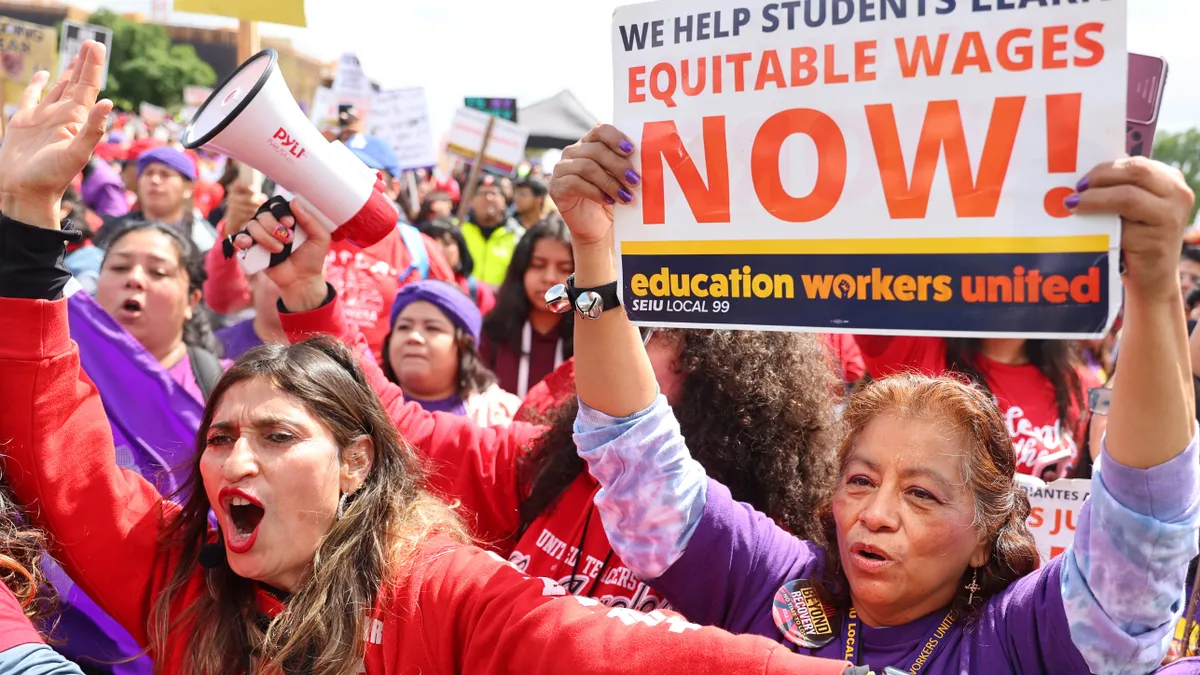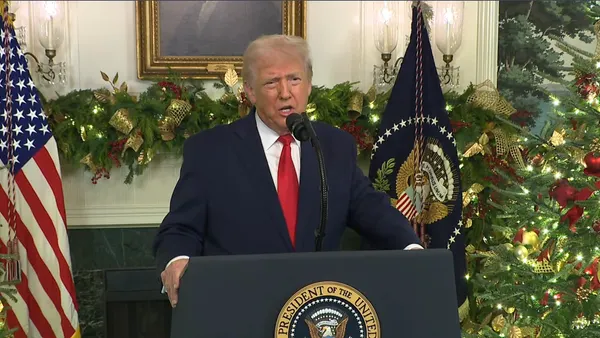Dive Brief:
- The “teacher pay penalty” — a measure of the gap between the weekly wages of teachers and similarly educated professionals — hit a record high of 26.4% in 2022, according to an Economic Policy Institute report released Friday.
- Once adjusted for inflation, public school teachers’ average weekly wages dropped $128 between 2021 and 2022, going from $1,457 to $1,329, EPI found. Meanwhile, the average weekly wages of other college graduates remained nearly unchanged in the same period, only slightly declining from $2,170 to $2,167.
- Smaller increases to teacher benefits were not enough to offset the growth of the teacher pay penalty, the report said. EPI added that the pay gap between teachers and other similarly educated workers surpassed 20% in 31 states. This ranged from 7.6% in New Jersey to 37.4% in Colorado.
Dive Insight:
The latest EPI report illustrates how rising inflation has only continued to worsen the wage gap between teachers and other similarly situated professionals.
The report’s analysis takes into account data from the Bureau of Labor Statistics. Teachers’ wages remained fairly flat for decades as inflation nearly canceled out the benefits of any raises, EPI found. However, employees in other sectors continued to see wages grow over time, even when adjusted for inflation.
As inflation rose to 8.1% in 2022 — the highest rate since 1981 — “the buying power of teachers took a big hit, and significant future pay increases will be needed to recoup the large loss,” the report said.
EPI’s findings come as other research shows low pay may be driving teachers out of the classroom.
For instance, teachers cited low salaries as one of the top three reasons they are considering leaving their jobs, according to a RAND Corporation survey published in September. On top of that, only 34% of teachers said their base salary was adequate. For teachers who felt otherwise, they wanted an average raise in base pay of $17,000.
Teacher vacancies are estimated to have jumped by 51% between 2022 and 2023, according to researchers from Kansas State University, University of Pittsburgh and other institutions. As some schools and districts continue to reel from these teacher shortages, more are beginning to rely on companies that hire contracted virtual teachers to provide live instruction remotely to an in-person class of students.







 Dive Awards
Dive Awards





